1
RESTORE YOUR FURNITURE

Upholstered furniture should provide a comfy seat and look wonderful, so when the cover of a favourite chair becomes worn, it's time to seek out a skilled upholsterer. Ask friends for recommendations, or contact the Association of Master Upholsterers and Soft Furnishers for craftspeople in your area. Sharon O'Connor of Vintique Upholstery specialises in giving antique seating new purpose. She uses the same type of springing and padding to preserve the original shape.
2
MISMATCH YOUR TEXTILES
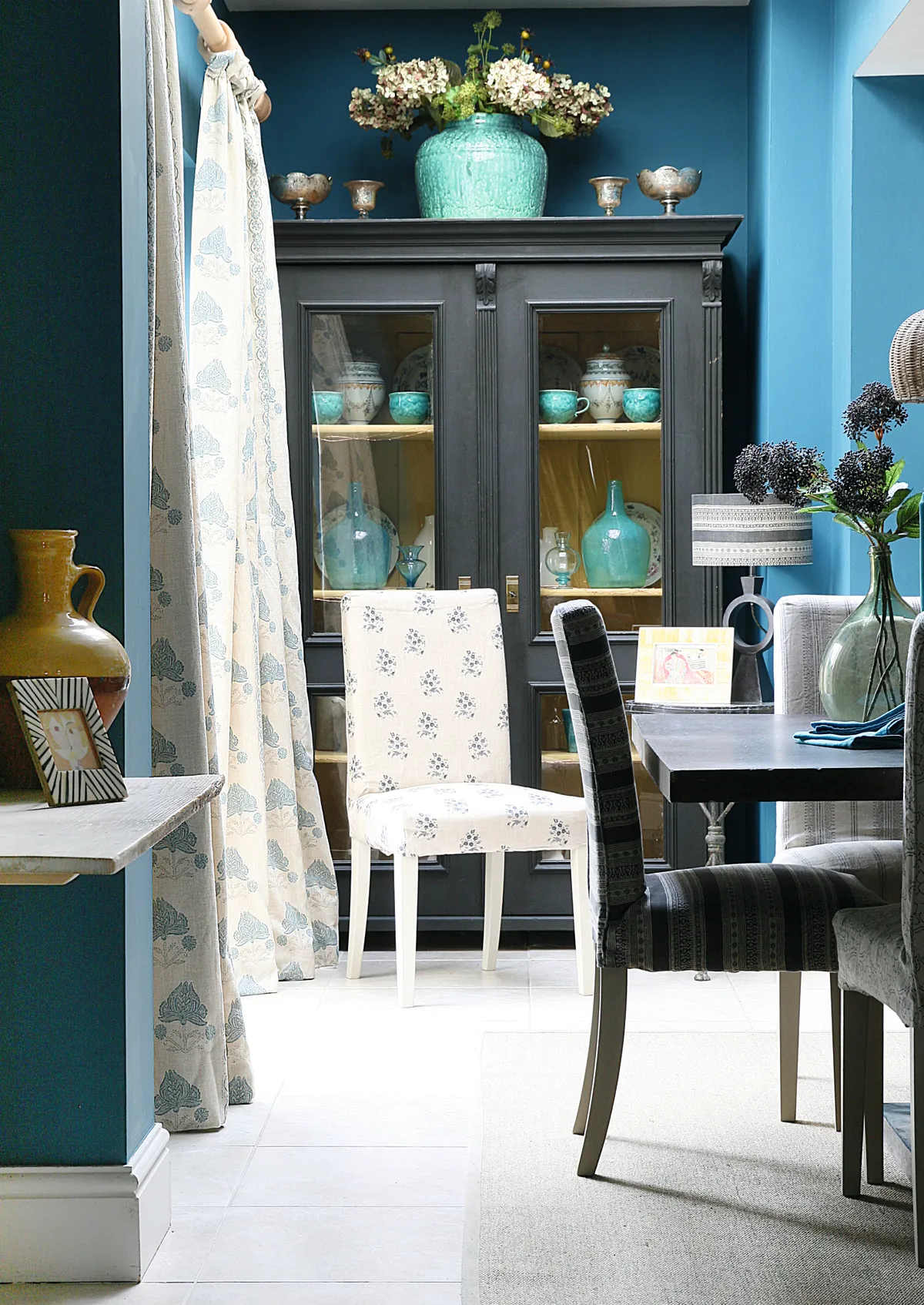
Laying the table with mismatched china is a favourite vintage styling tip, and in a country dining room furnished with antique treasures, extending the same idea to seating only adds to the room’s charm. The idea works well with antique chairs in a mix of styles, and covering modern chairs with cotton printed in designs inspired by old French linens will help them blend in to a period environment. Choose two or three fabrics for chairs plus another on a larger scale for the curtains.
3
REPEAT PATTERNS

Using the same patterned fabric for curtains and upholstery creates a cosy feel in small rooms and, in larger spaces, pulls the scheme together. When choosing a design, bear in mind that the motif will be seen clearly on the smooth surfaces of a chair or sofa, but may be lost in the folds of curtains. Most furnishing fabrics are good for both upholstery and curtains in rooms where they receive light wear but, in a sitting room, it is more practical to reserve the patterned fabric for occasional chairs and cover well-used seating in a durable cloth.
4
MIX WITHIN THE THEME
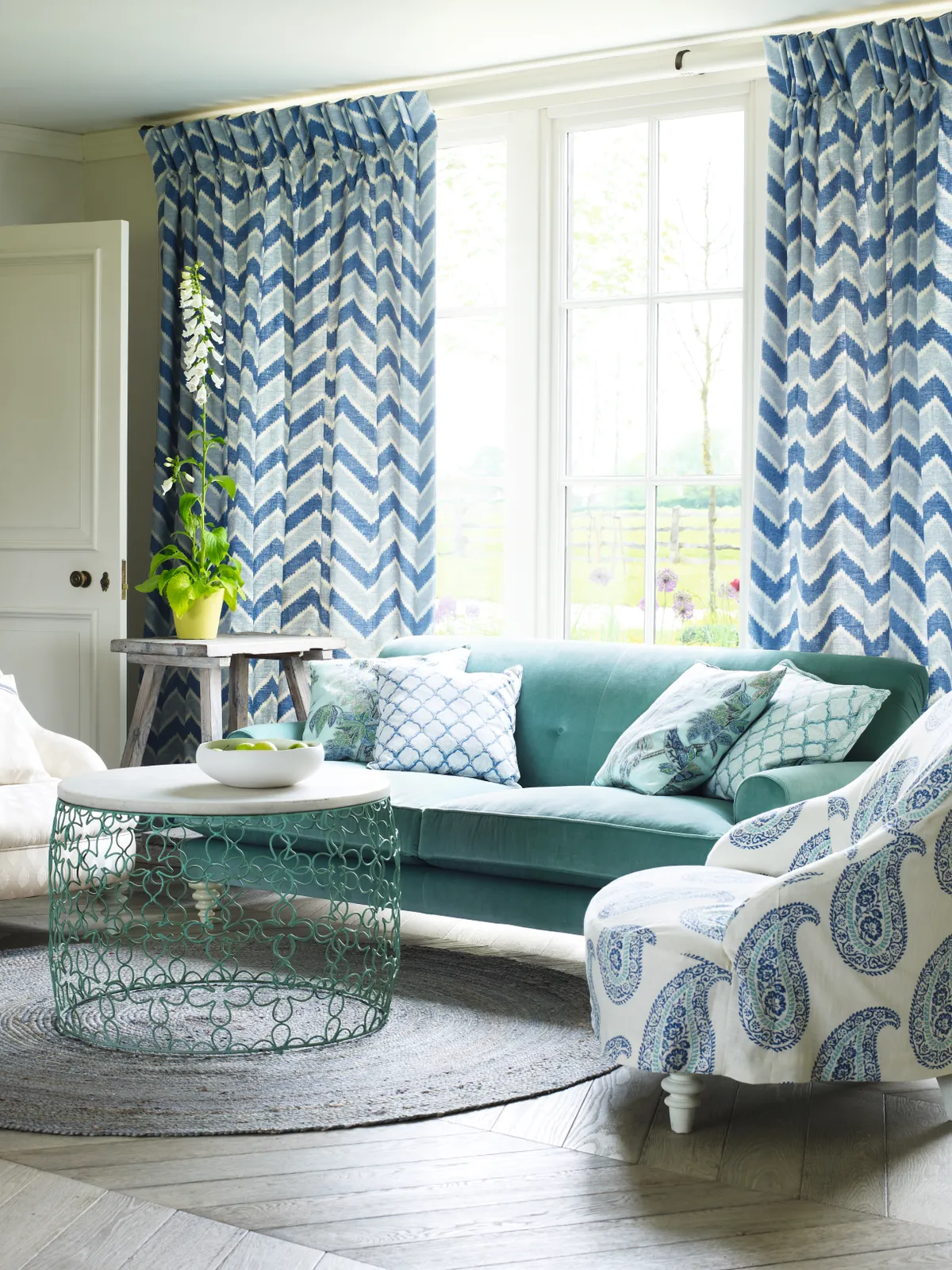
While the elements in some schemes may appear unconnected, there is often a common thread. Here, two themes are at work in the classic blue and white palette and the mixing of old and new. Traditional upholstery and weathered wood sit happily alongside a contemporary coffee table, while romantic prints with Indian heritage are energised by the curtains’ crisp chevron design.
5
LIGHT AND SHADE
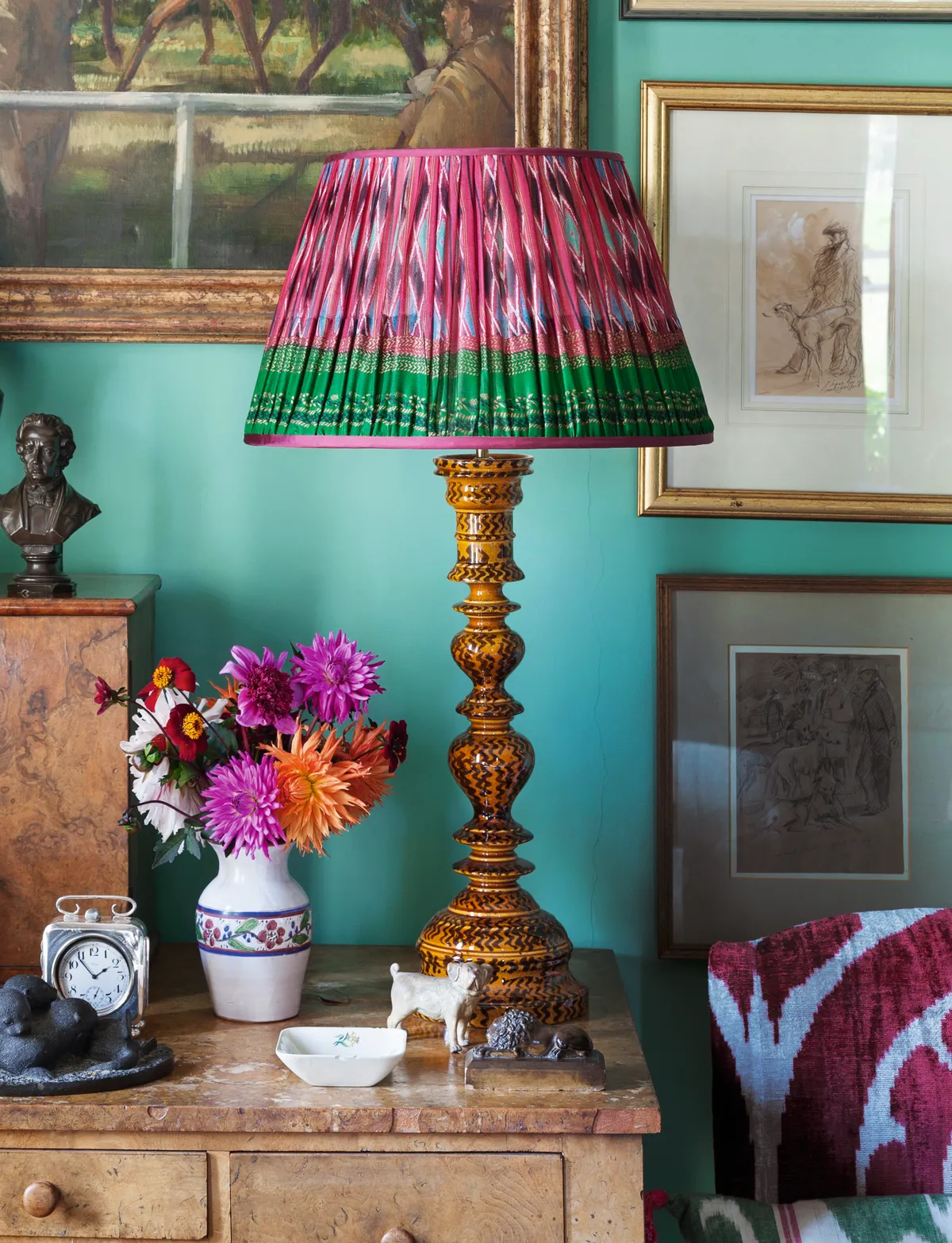
Any fabric that allows light to pass through is suitable for a lampshade though silk, cotton and linen are the most popular. Shades made from fabric bonded onto card have a neat, tailored shape, while pleated shades give a softer look.
6
ON TREND TWIST: FRINGING
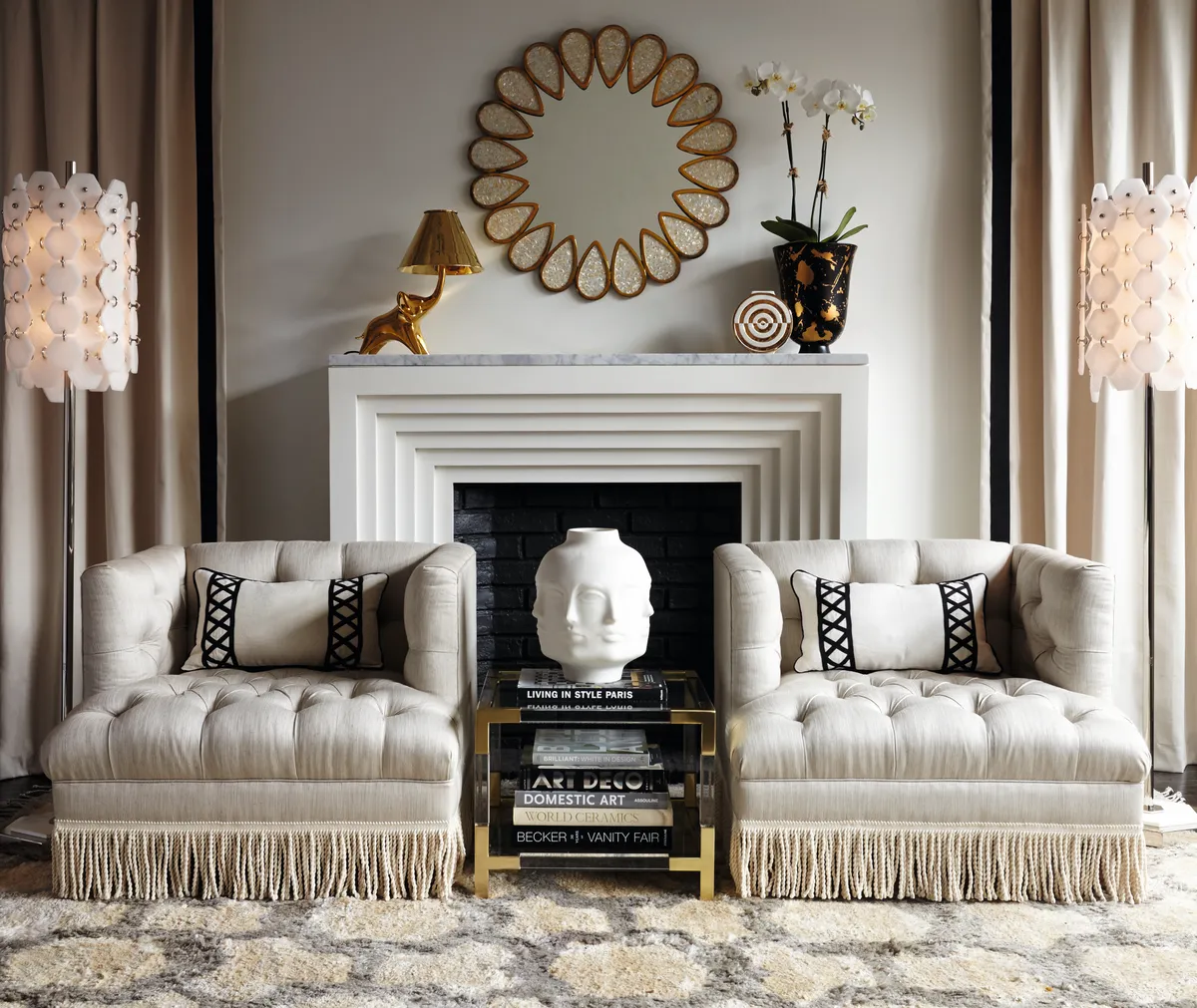
One of the next big trends in interiors will be fringing. Look out for heavy bullion fringing on bases of chairs and sofas, short fringing on cushions and long silken fringing on lampshades. Taking the lead are House of Hackney, Out There Interiors and H&M.
7
BUTTON UP
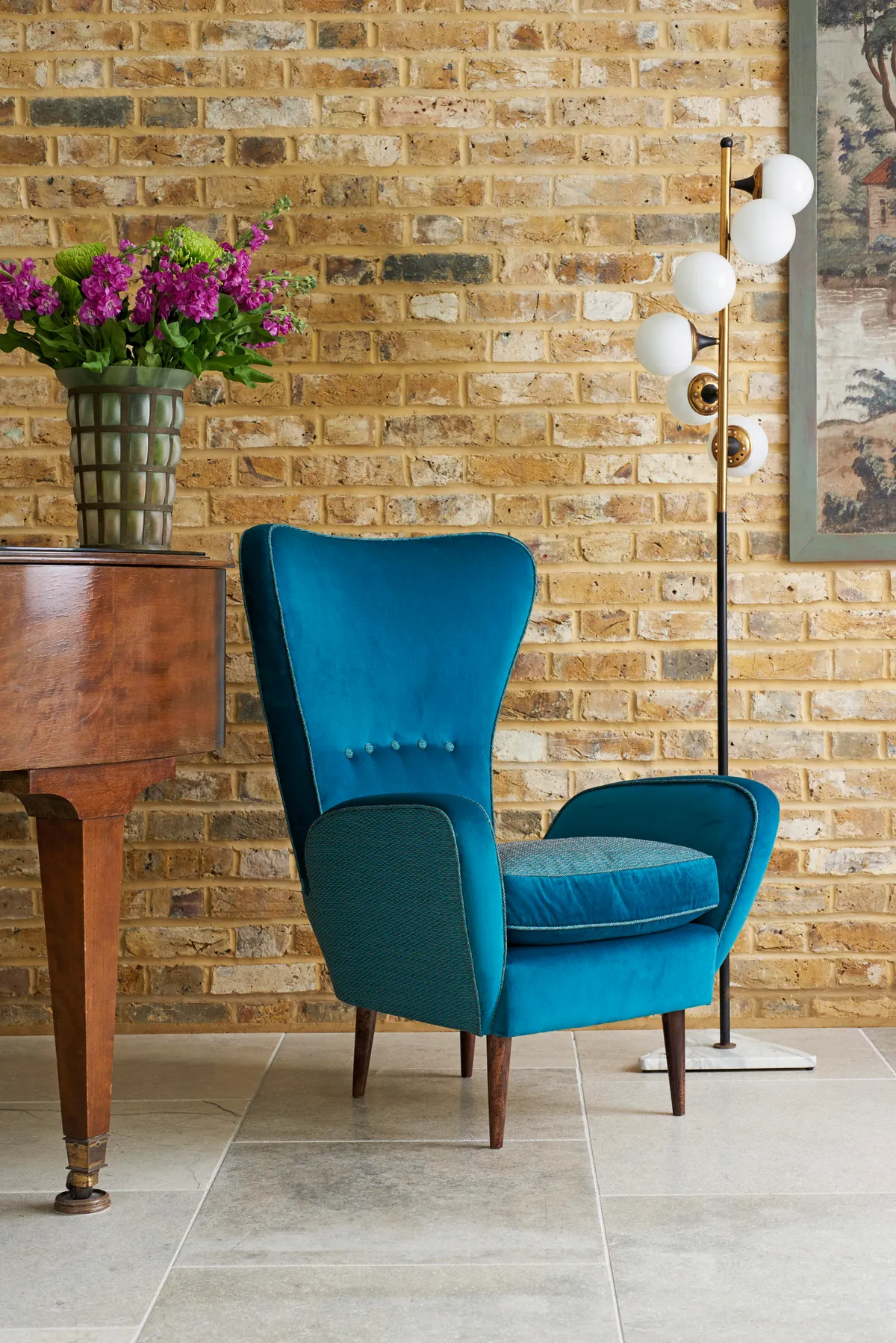
The Victorians preferred deep buttoning for a plump look but, by the mid 20th century, shallow buttoning was more fashionable. Applied as a decorative touch, the buttons barely dent the upholstery, adding to the elegance and glamour of the piece.
8
INSTANT UPDATE
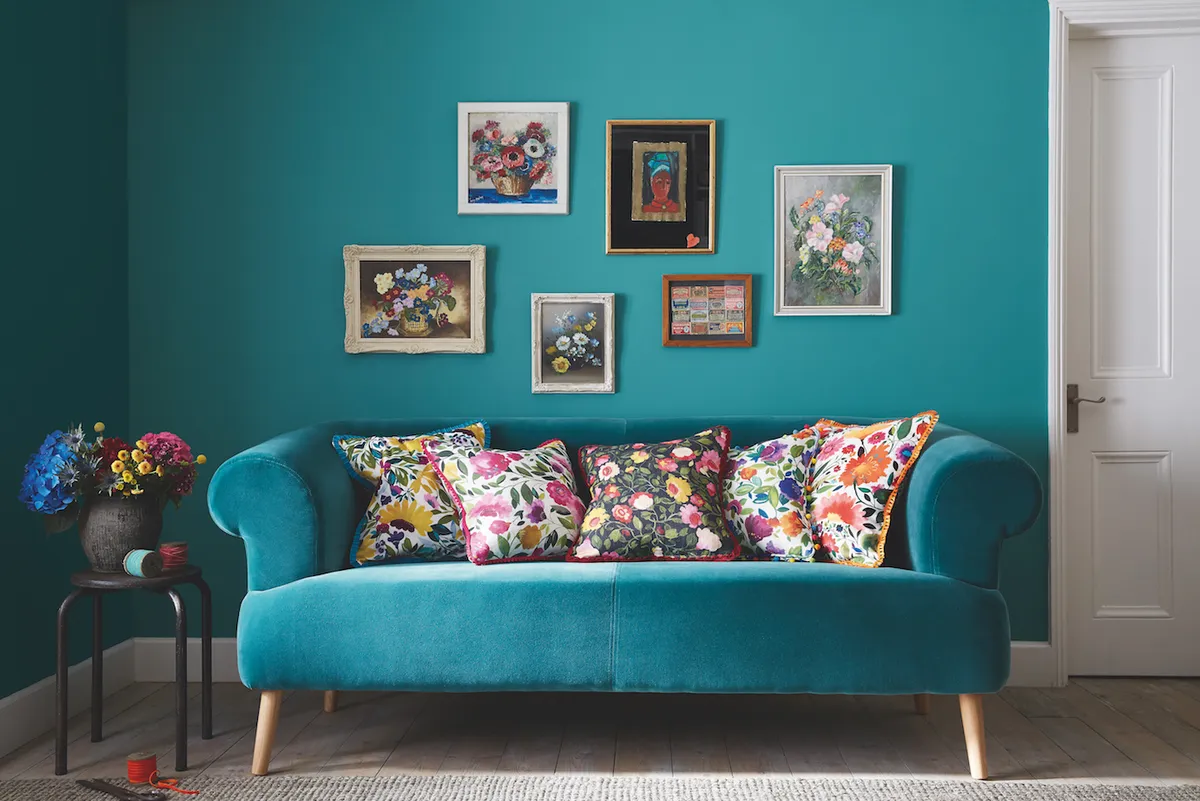
Adapting your home to the seasons is easy. Simply swap the cushions and throws for something more appropriate for the climate. In summer that could mean going forlight colours and delicate floral prints, while in winter opting for deeper tones. But if your upholstery is dark or very pale, the contrast could be too stark. Mid tones offer a solution. Instead of delicate pastels, choose brighter, clearer hues to give a dark sofa a summery look. Consider texture too – dressing cream upholstery with velvet cushions in smoky colours and knitted throws in warm neutrals gives an instant sense of comfort.
9
STATEMENT PIECE
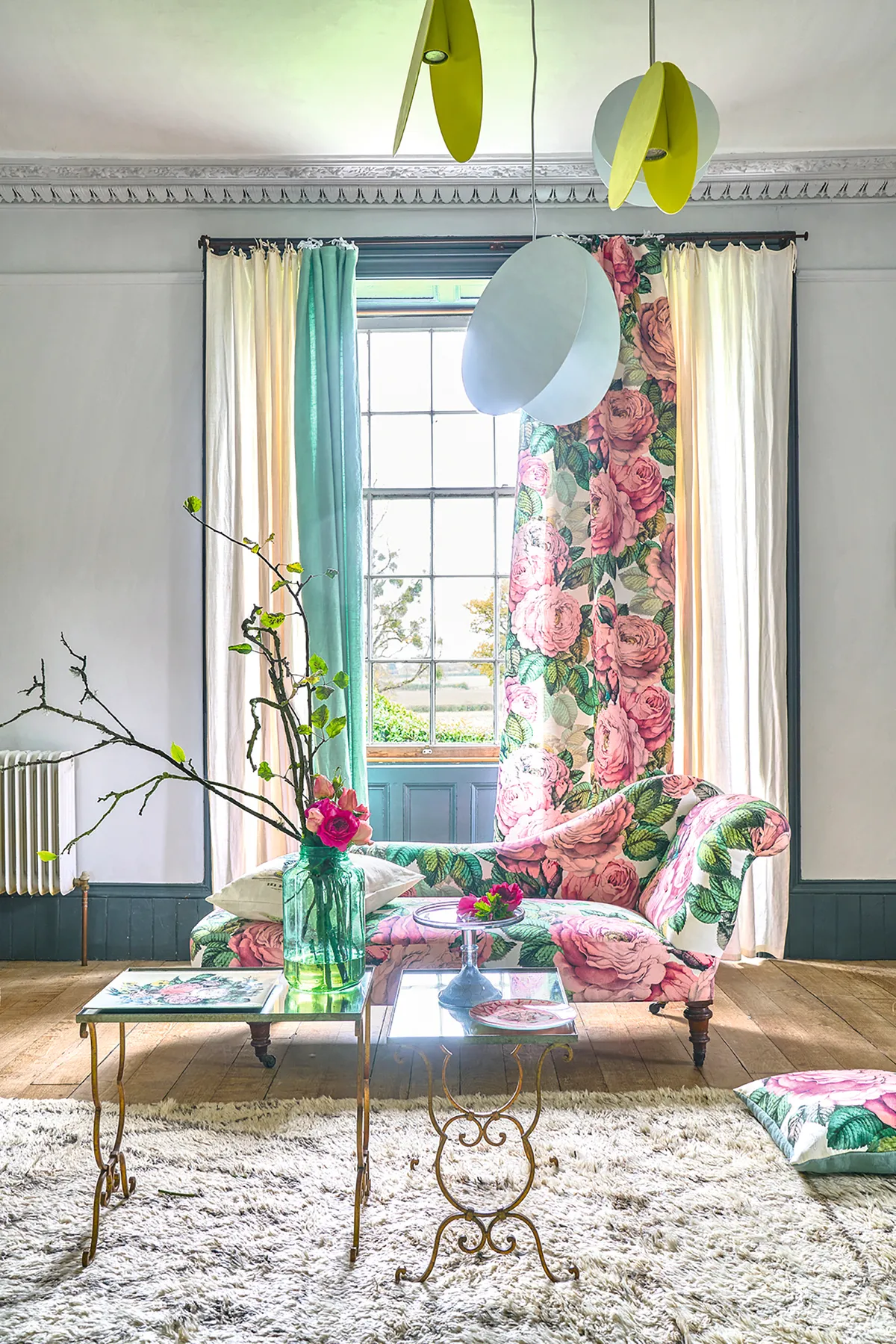
Furniture covered in a bold fabric makes a strong statement and can be the key to the room‘s scheme. Team an oversized design with smaller complementary patterns or plain toning colours elsewhere in the room and choose occasional furniture that echoes the shape of the upholstery. Set the piece apart slightly so it occupies its own space and place it against a backdrop that reflects its main colour or design.
10
TACTILE TEXTILES
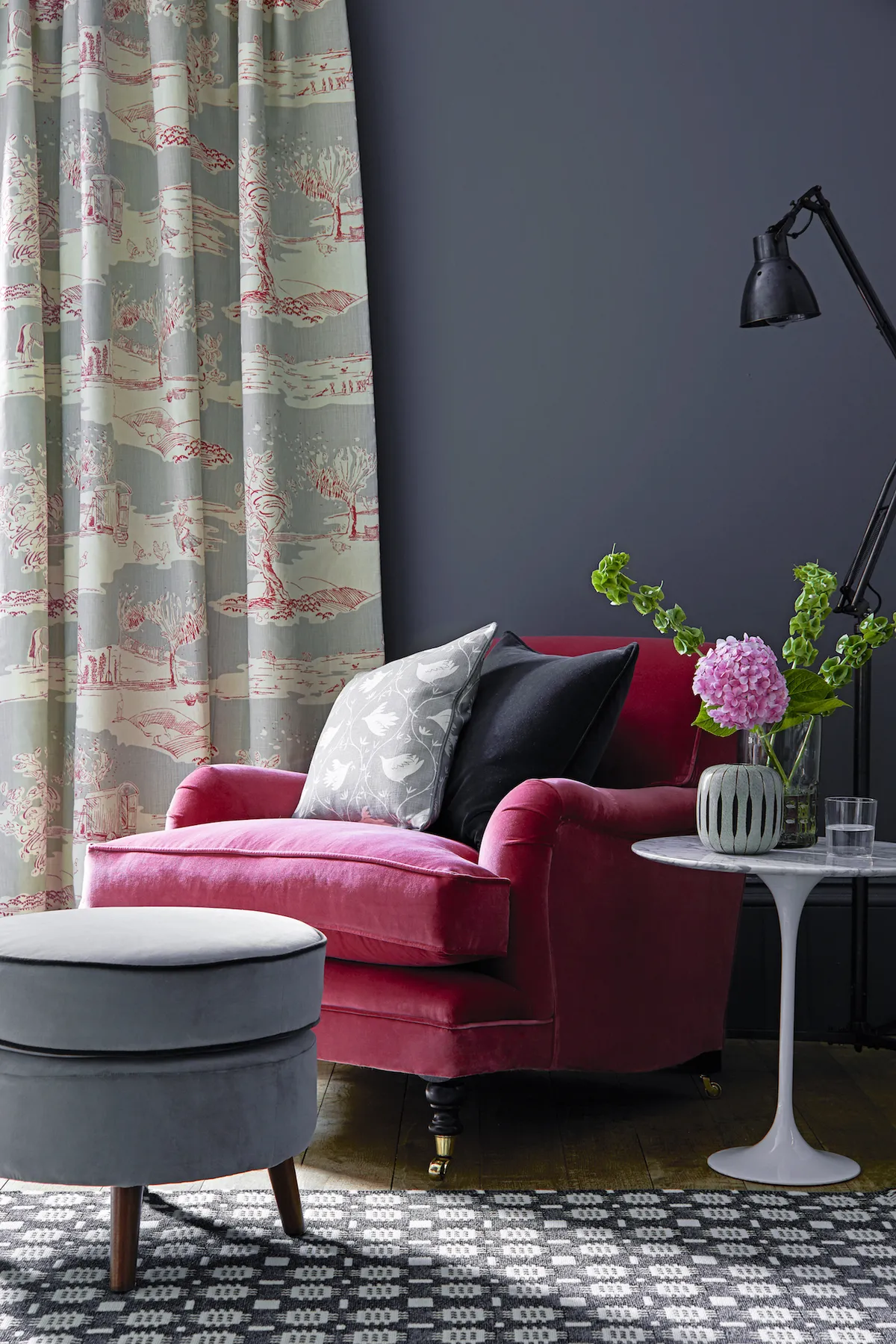
Choosing fabric to cover a sofa or armchair is not only a question of colour, pattern or even durability – texture is just as important. Materials such as suede or velvet that have a surface pile reflect light differently from smoother cloth, which affects the appearance of their colour, and textured fabrics of all kinds can feel more pleasing to the touch and comfortable to sit on. Choose the one that best matches your furnishing style. Velvet has a luxe look, tweed is a favourite for country interiors, corduroy has a relaxed, slightly boho look and even-surfaced textiles like faux suede, woollen weaves and felt come in a huge range of colours to suit more retro furniture.
This feature was first published in the September 2018 issue of Homes & Antiques.